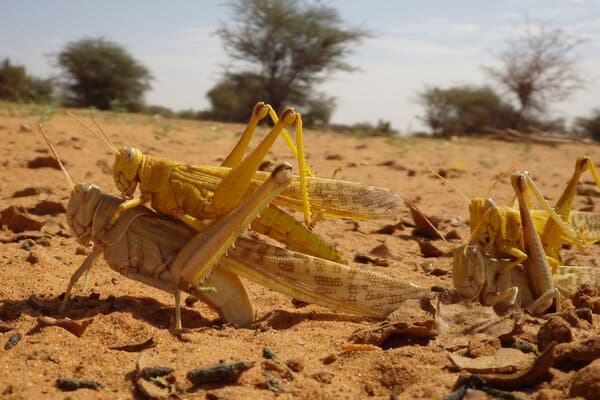Trilobites
Male locusts have long been observed shielding mates from other males. Researchers say this behavior may also protect the females from desert temperatures.

It may seem like a hopeless place, but locusts find a way to breed in the scorching heat of the Sahara at midday.
The biblical voracity of these insects make them among the world’s most destructive pests. They devour agricultural crops in swarms that number in the billions and stretch miles long. While they prefer to lay eggs in the desert’s cooler evenings, new research shows that female desert locusts can manage this even under the burning sun with help from male partners, which keep them cool by climbing on their backs to act as living parasols.
The finding, published in September in the journal Ecology, could contribute to efforts to reduce the use of pesticides while trying to protect agricultural crops from locusts. For as well known as desert locusts are, “we still don’t have particularly sustainable ways to manage massive outbreaks,” said Arianne Cease, a locust expert at Arizona State University who wasn’t involved in the new study. So “any additional information about their behavior can help with improving our capacity to monitor and treat them more sustainably,” she said.
Desert locusts males have long been observed mounting females to guard them from other contenders for mating. But this usually happens at night. Still, many females end up laying eggs during the day, when ground temperatures can reach above 120 degrees Fahrenheit.
“This is an amazing thing for an organism to do,” said Koutaro Ould Maeno, a locust expert at the Japan International Research Center for Agricultural Sciences and an author of the new study, “I am not aware of any animal that lays eggs in the ground in the hot Sahara during the day.”
To understand how female locusts pulled this off without ending up fried under the sun, Dr. Maeno and colleagues embarked on three field expeditions over a decade.


